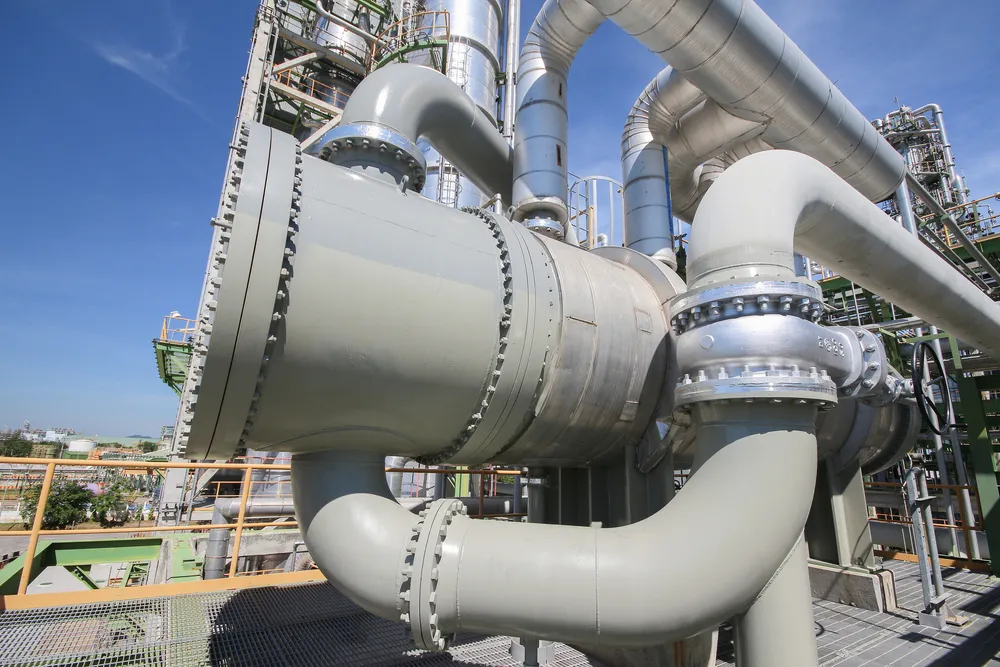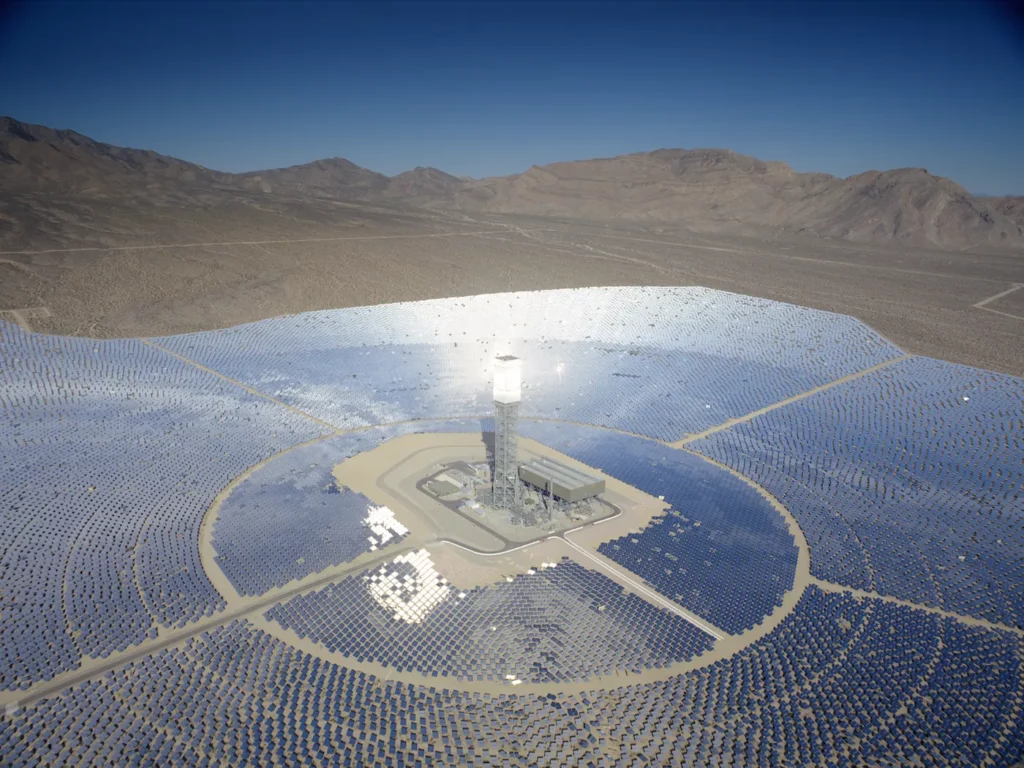Heat exchangers have been an essential, but often underrated component. These devices, crucial in the age of fossil fuels, are undergoing a significant transformation in the transition to cleaner and more sustainable energy sources. We will explore how these seemingly simple but essential assets are shaping the global energy future.
This article becomes the meeting point for all those seeking to understand the present and future of one of the energy assets. From pioneers seeking change to those seeking to adapt and excel in an energy landscape in constant transformation, heat exchangers emerge as unexpected but indispensable protagonists.
The vital importance of heat exchangers
At the height of the fossil fuel era, heat exchangers were and remain essential pillars of the energy industry.

Operation in extraction and refining
In oil and gas extraction, these devices allow precise temperature control to efficiently separate components. More than 70% of refining operations depend on heat exchangers for the distillation process, increasing the purity of petroleum derivatives.
Power generation in fossil fuel plants
Coal, gas or oil-based power plants require the generation of steam to drive turbines and produce electricity. Here, heat exchangers have a critical impact. In this context, innovations have allowed thermal efficiency to be increased by up to 20%, reducing heat losses in the process.
Challenges and limitations in the fossil era: The need for change
In the fossil fuel paradigm, heat exchangers have been fundamental pieces, but their role has not been without crucial challenges that have driven the need for imminent change.
Heat exchangers were vital in the fossil fuel era: They separated components in extraction and refining, and increased efficiency in power plants. However, they faced challenges such as energy inefficiencies, emissions and costly maintenance.
The clean energy transition offers an opportunity to address these issues and move towards more sustainable and efficient energy generation.
Energy inefficiencies: The persistent challenge
Inefficiency in heat exchangers has been a significant drag on energy production. Studies indicate that up to 30% of energy is lost due to inefficiency in these devices.
Pollution and excessive emissions
Heat exchangers in fossil operations can be responsible for a large portion of greenhouse gas emissions. The need to reduce this environmental footprint is urgent.
Maintenance and limited useful life
Companies, aware of the importance of operational efficiency, know that the constant maintenance and limited useful life of heat exchangers have represented significant economic challenges.
The opportunity in the energy transition
In this context, the transition towards cleaner and more sustainable energy sources presents a crucial opportunity. Professionals, students and companies can recognize in this change a way to address these challenges comprehensively.
Heat exchangers face substantial challenges: Up to 30% of energy is lost due to their inefficiency, they contribute to excessive greenhouse gas emissions, and they require constant maintenance.
The transition to cleaner and more sustainable energies offers an essential opportunity to address these problems comprehensively, driving professionals, students and companies towards a more efficient and environmentally friendly energy future.
The move towards clean energy: A new era for heat exchangers
With the push toward clean energy, heat exchangers are undergoing a remarkable transformation, adapting to meet the demands of an evolving energy landscape.
Operation in renewable energies: Redefining its usefulness
In solar plants, heat exchangers are key to storing and distributing the captured heat. A flagship project using heat exchangers in solar plants is the Ivanpah Solar Electric Generating System solar thermoelectric power plant, located in the Mojave Desert, California, United States.

This plant uses a technology called concentrated solar power (CSP) tower, where the sun’s rays are concentrated by mirrors in a receiving tower containing molten salts. Heat exchangers play an essential role in this process by transferring the heat captured by molten salts to a water circuit, generating steam to power turbines and produce electricity.
The significant contribution of this technology lies in its ability to store heat in molten salts, allowing for more stable and flexible energy generation, even during hours when there is no direct solar radiation. This feature has helped provide power during periods of high demand, thus contributing to the stability of electricity supply in the region and showing the potential of solar thermoelectric plants in generating renewable energy.
Optimization in the capture of renewable energy
Optimizing heat exchangers represents a significant step in improving efficiency in renewable energy systems. Recent studies reveal that the implementation of heat exchangers can boost efficiency in solar PV systems by up to a staggering 25%.
Increased efficiency in photovoltaic solar energy
Research has shown that the integration of heat exchangers in photovoltaic systems allows the excess heat generated by solar cells to be dissipated, which prevents overheating and optimizes their performance.
Successful cases such as the “SolarHeatGrid” project, developed in Germany, have shown a 25% increase in the energy efficiency of photovoltaic systems thanks to the strategic implementation of heat exchangers.
Significant improvement in geothermal energy capture
In the field of geothermal energy, the application of heat exchangers has been equally impactful. A relevant example is the “ Raft River Geothermal Power Plant ” project in Idaho, United States.
This geothermal plant implements heat exchangers to maximize energy generation efficiency. Through a heat transfer process, the exchangers allow the heat of the geothermal fluid to be captured and used to produce steam that powers turbines and, in turn, generates electricity.
The improvement in the efficiency of these heat exchangers has allowed a considerable increase in the capture of geothermal energy at the Raft River project, which has contributed to maximizing the production of clean and sustainable energy from geothermal sources at that specific plant.
Outlook for the future
These advances in heat exchanger optimization have not only improved the efficiency of renewable energy, but have also paved the way for new research and development in the field.
The scientific community and industry are focused on making the most of this technology, continually seeking innovations that further boost the efficiency and generation capacity of clean energy from renewable sources.
Innovations for a sustainable future
The path towards a sustainable future in the energy field depends largely on innovations in heat exchangers and their role in optimizing renewable energy sources. As we move forward, several promising innovations are emerging that are shaping a more efficient and sustainable energy landscape.
Advances in materials and design
Research into new materials for heat exchangers is driving significant improvements in the heat transfer and durability of these devices.
Innovations in nanotechnology, advanced ceramics and specialized alloys are paving the way to more efficient, corrosion-resistant and long-life exchangers.
Integration of smart technologies
The integration of smart technologies, such as the use of sensors and real-time monitoring systems, is allowing more precise and efficient control of heat exchangers. This not only improves its performance, but also reduces maintenance costs and increases the reliability of operations.
Modular and scalable design
The development of modular and scalable heat exchangers is revolutionizing the way these devices are deployed and maintained.
This innovation makes it easier to adapt to different environments and energy needs, making them more versatile and cost-effective in a wide range of applications.
Focus on energy efficiency
The emphasis on energy efficiency is driving research towards more efficient heat exchangers, capable of minimizing heat losses and maximizing energy transfer. These advances are crucial to optimize the generation and use of renewable energy, thus contributing to the reduction of the carbon footprint.
These innovations represent significant steps towards a more sustainable energy future and the death of a past based on heat exchangers for fossil energy.
Conclusion
In summary, heat exchangers have been and will continue to be an essential component in energy development. From their initial role in the fossil fuel era to their evolution in the transition to renewable energy, these devices have demonstrated their ability to drive efficiency and sustainability in power generation, shaping a cleaner, more efficient and promising energy future. for generations to come.

